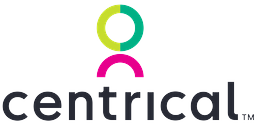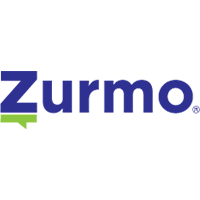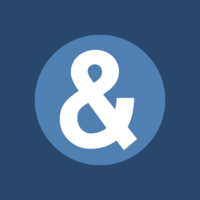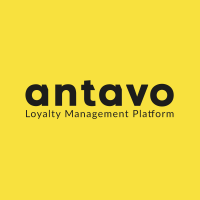What is gamification software?
Gamification software is any tool or platform used for applying game mechanics to non game contexts in order to boost engagement and successful end-results. Common use cases include customer retention, elearning, employee engagement, and performance management. In recent years we’ve seen an explosion in the use of gamification and gamified components in consumer and business software and apps. The increase in adoption of gamification has led to a split in definition between gamification and a gamified element. While there are still many platforms that provide custom and complete gamification tools for marketers, sales people, and consumer brands, there are even more types of software that have adopted gamified features into existing products.Find your new gamification software
Best gamification software: Our picks
- first
-
Product
 SAP
SAP - Features
- Sales/Service Motivation Yes
- Customer loyalty No
- Analytics Yes
- Performance Mgmnt Yes
- Learning Mgmnt Yes
- SAP (formerly CallidusCloud) uses gamified elements to improve overall sales and customer service performance.
-
- first
-
Product
 BunchBall Nitro
BunchBall Nitro - Features
- Sales/Service Motivation Yes
- Customer loyalty Yes
- Analytics Yes
- Performance Mgmnt Yes
- Learning Mgmnt Yes
- BunchBall is a flexible enterprise gamification software designed to help companies quickly improve internal and customer outcomes through templated gamified elements.
-
- first
-
Product
 Centrical
Centrical - Features
- Sales/Service Motivation Yes
- Customer loyalty No
- Analytics Yes
- Performance Mgmnt Yes
- Learning Mgmnt Yes
- Centrical (formerly GamEffective) provides performance management and gamified learning experiences to enterprise companies.
-
- first
-
Product
 Mambo.io
Mambo.io - Features
- Sales/Service Motivation Yes
- Customer loyalty Yes
- Analytics Yes
- Performance Mgmnt Yes
- Learning Mgmnt Yes
- Mambo.IO is an enterprise gamification platform designed for multiple industries and both customer and internal use cases.
-
- first
-
Product
 LevelEleven
LevelEleven - Features
- Sales/Service Motivation Yes
- Customer loyalty No
- Analytics No
- Performance Mgmnt Yes
- Learning Mgmnt Yes
- LevelEleven uses gamification to increase employee motivation and productivity through social contests.
-
- first
- Features
- Sales/Service Motivation Yes
- Customer loyalty Yes
- Analytics Yes
- Performance Mgmnt Yes
- Learning Mgmnt Yes
- Hoopla is an automated, real-time motivation and recognition solution that is designed to motivate teams.
- first
-
Product
 Zurmo
Zurmo - Features
- Sales/Service Motivation Yes
- Customer loyalty Yes
- Analytics Yes
- Performance Mgmnt No
- Learning Mgmnt No
- Zurmo provides specialized gamified Customer Relation Management (CRM) applications to businesses.
-
What business departments use gamification software and tools?
Gamification is useful for any business team that needs motivation to increase productivity. All the team needs is measurable goals to attain and a platform to track and report on progress and deliverables. The gamification platform the team chooses depends on its needs and can be as low-tech as a whiteboard or sticky notes or as high tech as a custom enterprise gamification app. Whatever form the gamification comes in, these are the teams that most often find a use for a gamification software.HR
Human resources often takes responsibility for critical onboarding, corporate training, and ongoing performance management initiatives for a company, each of which can be gamified. And many HR departments are using gamification efforts to bring engagement to some of their more grueling tasks, like recruiting. Introducing gamified features and elements to potential candidates through the recruiting software can send a message that your team is invested in motivation and engagement.Sales teams
Sales teams often run on a natural sense of competition for the best deals or the highest sales. Sales gamification software can help concentrate that competitive nature into key sales enablement tasks. Documenting tasks in a CRM, scheduling call appointments, and promoting quick contract turn-arounds can all be gamified and improve overall revenue generation. Gamified sales tools tap into a natural and healthy sense of competition among sales reps to improve sales tactics and drive revenue growth. A range of features from embedded CRMs, sales contests, and leaderboards in these tools give sales teams an engagement lift. Below are two great gamification tools for sales team performance improvement:SAP Sales Cloud
 SAP Sales Cloud is a leading sales force engagement tool that uses gamification to better train and maintain optimal sales outcomes. Combined with powerful analytics and forecasting tools, this sales gamification tool takes a data-driven approach to sales communications. The tool also includes customer-facing products for driving lead generation and collecting customer feedback. SAP Sales Cloud also can integrate with other gamification software like Zendesk Platform to link customer and user profiles easily.
Best gamification software for
SAP Sales Cloud is a leading sales force engagement tool that uses gamification to better train and maintain optimal sales outcomes. Combined with powerful analytics and forecasting tools, this sales gamification tool takes a data-driven approach to sales communications. The tool also includes customer-facing products for driving lead generation and collecting customer feedback. SAP Sales Cloud also can integrate with other gamification software like Zendesk Platform to link customer and user profiles easily.
Best gamification software for
- Enterprise sales teams
- B2B sales teams
Ambition
 Ambition’s enterprise sales tools include gamified components like leaderboards, contests, and Fantasy Football-style competitions to improve sales engagement. Sales managers can quickly set up new competitions among sales teams without the use of IT resources, and real-time leaderboards tap into the teams’ natural drive to win. Gamification features work within the goal-driven and data-backed sales application for increased engagement focused on business growth.
Best gamification software for
Ambition’s enterprise sales tools include gamified components like leaderboards, contests, and Fantasy Football-style competitions to improve sales engagement. Sales managers can quickly set up new competitions among sales teams without the use of IT resources, and real-time leaderboards tap into the teams’ natural drive to win. Gamification features work within the goal-driven and data-backed sales application for increased engagement focused on business growth.
Best gamification software for
- Data-driven sales teams
Help desk, call center, and customer support
Help desk and customer support is often grueling work: customer problems and issue tickets decide your schedule, and customer frustrations can be emotionally taxing. By gamifying parts of the process, customer support and help desk representatives can find a little joy in the everyday. Whether it’s competing for the highest completion rate, best customer satisfaction rate, or another custom internal metric, gamification can help reps see beyond the individual ticket and better understand how their work affects the overall customer lifetime value.Marketing and customer engagement
Competition in nearly every industry is tight, and companies must find ways to differentiate themselves from their competitors. While offering discounts and incentives may work in the short-term, customer retention, long-term customer satisfaction, and increased lifetime value have become the new metrics of success. Gamification engages customers at all points in the lifecycle. For example, Evoq Engage encourages engagement and participation through social profiles and badges, These are just some of the teams and use cases for gamification software and software with gamified components. The most important idea for each use of gamification is that the game elements provide a vehicle for individual engagement and ties positive feelings towards the brand.Retail and customer loyalty
While many gamification programs focus on increasing employee engagement, these tools use gamification to build customer lifetime value through loyalty and rewards programs.Social & Loyal
 Social & Loyal is a social CRM that uses gamified features to attract and retain customers. Customers join your rewards program through your ecommerce site or Facebook page, and immediately begin to earn points by completing actions like making a purchase, completing a survey, filling out a quiz, or other engaging actions that you set up. All of the data from the customer’s actions is logged in your CRM, where your team can use it to better understand your customers, build better deals for them, and provide them with the best products and a better customer experience.
Best gamification software for
Social & Loyal is a social CRM that uses gamified features to attract and retain customers. Customers join your rewards program through your ecommerce site or Facebook page, and immediately begin to earn points by completing actions like making a purchase, completing a survey, filling out a quiz, or other engaging actions that you set up. All of the data from the customer’s actions is logged in your CRM, where your team can use it to better understand your customers, build better deals for them, and provide them with the best products and a better customer experience.
Best gamification software for
- Retail sales
- Ecommerce
- Customer loyalty
Antavo
 Antavo’s customer behavior software uses game elements to engage customers, build brand loyalty, and increase revenue. Retailers can choose from 12 different contest types that gather customer feedback, build social clout, and engage users with content. Custom surveys let retailers learn more about their buyers and better tailor product offerings and promotions to the actual needs and wants of individuals. Check out the loyalty automation tools that use marketing automation techniques to engage customers and nurture them toward higher lifetime value.
Best gamification software for
Antavo’s customer behavior software uses game elements to engage customers, build brand loyalty, and increase revenue. Retailers can choose from 12 different contest types that gather customer feedback, build social clout, and engage users with content. Custom surveys let retailers learn more about their buyers and better tailor product offerings and promotions to the actual needs and wants of individuals. Check out the loyalty automation tools that use marketing automation techniques to engage customers and nurture them toward higher lifetime value.
Best gamification software for
- Retail sales
- Ecommerce
- Customer loyalty
Enterprises
Enterprise gamification platforms have the system capabilities to support a range of internal and external gamification functions. They also have infrastructure in place to handle mounds of input from hundreds or thousands of employees and customers for every account. These options have gamification capabilities and are best for multi-location and multinational companies looking to increase engagement. Two of our gamified picks for enterprises include:Bunchball Nitro
 Bunchball calls itself an engagement and performance solution, and Nitro uses gamification to increase performance across the enterprise. With apps and integrations for several types of enterprise software including Salesforce, SAP, and Jive, Nitro gives enterprise companies a gamification solution that fits right into their current software infrastructure.
Best gamification software for
Bunchball calls itself an engagement and performance solution, and Nitro uses gamification to increase performance across the enterprise. With apps and integrations for several types of enterprise software including Salesforce, SAP, and Jive, Nitro gives enterprise companies a gamification solution that fits right into their current software infrastructure.
Best gamification software for
- Learning
- Support
- Employee engagement
- Customer loyalty
Centrical
 Centrical is a gamified enterprise employee engagement platform that helps companies improve their employee performance, training, and revenue. While the solution doesn’t include options for promoting customer devotion, it does provide gamified solutions for engaging contract workers, channel employees, and business process outsourcing. Centrical’s Salesforce gamification rewards employees and promotes healthy competition within the workplace to help the sales team achieve its goals. The learning management solution (LMS) features integrate with your existing LMS, or you can use the Centrical platform to avoid purchasing another piece of training software.
Best gamification software for
Centrical is a gamified enterprise employee engagement platform that helps companies improve their employee performance, training, and revenue. While the solution doesn’t include options for promoting customer devotion, it does provide gamified solutions for engaging contract workers, channel employees, and business process outsourcing. Centrical’s Salesforce gamification rewards employees and promotes healthy competition within the workplace to help the sales team achieve its goals. The learning management solution (LMS) features integrate with your existing LMS, or you can use the Centrical platform to avoid purchasing another piece of training software.
Best gamification software for
- Learning
- Training
- Sales
- Customer support
- Outsourced and contract employees
Small businesses
Small business gamification needs vary widely. Whether you choose an out-of-the-box badge and leaderboard solution or a custom gamified learning and engagement platform, these vendors take performance and outcome seriously.MindTickle
 MindTickle is a gamified sales enablement software solution that helps sales teams stay focused on revenue-driving behaviors. MindTickle provides a single platform for onboarding, training, microlearning, coaching, and analytics to improve sales team outcomes in a sustainable and fun atmosphere. Learners can use the skills and practice features to simulate difficult sales situations in a safe environment that promotes individual skills growth. Additionally, MindTickle’s Salesforce integration ensures quick and easy data reporting and sharing.
Best gamification software for
MindTickle is a gamified sales enablement software solution that helps sales teams stay focused on revenue-driving behaviors. MindTickle provides a single platform for onboarding, training, microlearning, coaching, and analytics to improve sales team outcomes in a sustainable and fun atmosphere. Learners can use the skills and practice features to simulate difficult sales situations in a safe environment that promotes individual skills growth. Additionally, MindTickle’s Salesforce integration ensures quick and easy data reporting and sharing.
Best gamification software for
- Sales training
- Sales coaching
Mindspace
 Mindspace produces custom gamified learning and engagement experiences for companies of all sizes. Don’t be intimidated by the big brand names on their website (they’ve worked with Google and Starbucks), this team is interested in building great gamified products that produce results. Their focus is on engaging employees and customers through great content within a rewarding atmosphere.
Best gamification software for
Mindspace produces custom gamified learning and engagement experiences for companies of all sizes. Don’t be intimidated by the big brand names on their website (they’ve worked with Google and Starbucks), this team is interested in building great gamified products that produce results. Their focus is on engaging employees and customers through great content within a rewarding atmosphere.
Best gamification software for
- Sales
- Training
- Customer loyalty
- Employee engagement
Features of gamification apps and gamified software
Software that includes gamification elements or features or that provides gamification to support business initiatives will include at least one of these features. Not all gamification examples will support all engagement efforts, so make sure the software you choose contains the right features.Badges and rewards
Software with a player centered design will often use badges and rewards to provide visual or physical recognition for positive user behavior. Badges are usually electronic images that players can collect to show their progress within an app. Users can share badges socially or collect them and display them in a gallery on their profile. Earn enough of the right badges, and the individual may be eligible for a reward — a physical manifestation of their progress. Customer loyalty tools often provide rewards in the form of digital coupons or free items, whereas companies may offer cash or days off as rewards for spectacular training.Leaderboards
Leaderboards maintain a sense of competition in a group by listing all the individual players and ranking them according to progress markers. Companies hoping to increase competition among sales executives may publish a revenue leaderboard in the sales office with the top five sellers for the month. Or a consumer app may publish an anonymized leaderboard to track the influence of customers. But take caution: these tools often help the highest performing individuals perform even higher, while it may have the opposite effect on the middle and lower performing tiers.Maps, progress bars, and goals
Many well-designed gamification tools use virtual maps to track an individual’s progress toward a goal. Often an app’s maps expand, offering new goals to achieve and pathways to follow that match those new learning, sales, or purchasing goals. Using a game design model common to many video games, the maps show completed modules, allow for individuals to repeat modules to improve their score, and award badges or other themed rewards upon completion. Other tools use progress bars to show the competitor’s progress through a task or set of courses. Progress bars are especially helpful as they can persist across different screens without taking up too much visual real estate, so competitors can always have a sense of how well they’re doing. Social news feeds Social news feeds improve communication around shared goals, engender some friendly competition among participants, and provide an at-a-glance view of recent activity within the app. Often based on the Facebook news feed, these tools combine instant messaging with status updates and awards notifications.Reporting
Increased engagement goes hand in hand with advanced reporting and analytics, and most gamification software options provide both. Companies can use reporting tools to understand the baseline of their employee engagement, and then measure increases in engagement, skills learned, time spent in the app, and more. Reporting can give HR and administrative teams key insight into the ROI of the tool or program and can help managers understand how their teams perform to improve overall outcomes and resolve team challenges. Reporting for customer behavior and user engagement gamification tools is often connected to marketing automation software to reward customers quickly and automatically for performing desired behaviors like referring friends and purchasing regularly.Types of gamified software
Because software vendors have chosen to acquire gamification companies rather than build their own tools, the gamification software market isn’t clear-cut. In order to understand how to implement gamification within your business, it’s important to remember that gamification tools now exist as part of CRM, ERP, help desk, and customer behavior software. The normalization of gamification means you’ll find many other specialized and overlapping software categories that include gamified features or elements:- Performance Management: This HR software helps managers and teams better understand an employee’s job responsibilities, track job-related goals and metrics, and measure improvement. A gamified element might be involved to track employee progress and increase engagement.
- Learning Management Systems: This software gives companies a gamification platform to build, track, and improve customer and employee training modules through an online web portal. Elearning gamification is often built into these systems to increase student engagement and drive user outcomes.
- Employee Engagement: These platforms use gamified tools or elements to promote productivity, training, and revenue growth across a company. While often used to motivate sales teams to increase productivity, employee engagement software can be used to reduce turnover, give meaningful feedback, increase training efficiency, and improve overall morale.
- Leaderboards
- Rewards
- Recognition
- Newsfeeds
- Contests
Major trends in gamification
Mobile
Our world has gone mobile. This change has affected how we advertise and how we interact with brands both at work and in our personal lives. The ubiquity of mobile usage for both work and play has driven the rise of gamified mobile device apps. Because everyone is connected all day, the chances for mobile gamification of business systems and consumer apps is much higher. Employees can get notifications on their phones to update sales numbers or work orders when they leave a job site, and consumers can interact with their favorite apps from anywhere including the office or coffee shop.Social interaction
For many, modern life is dominated by social media: we keep up with friends and family on Facebook, we get our news from Twitter, we network on LinkedIn. Online social interaction has so dominated our lives that business apps now adopt many of the software tropes of social media including likes, activity feeds, and instant messaging. Each of these pressure software vendors to make interactions on business software like CRMs and ERPs more like the commercial social media apps we use every day. The concentration of social interaction in our lives also drives and reinforces gamified features of business application software. Teams can support one another in sales competitions and congratulate the first to achieve a badge. In addition to growing revenue and helping teams achieve defined KPI objectives, the social nature of these tools helps all users engage in and form the culture of the company. A strong company culture results in more engaged employees, higher revenue, and reduced turnover.AI
Artificial intelligence (AI) has become all the rage within business and consumer software engineering for lots of reasons, most notably:- It helps reduce some of the manual (and boring) work previously done by humans
- It brings together large data sets for fast analysis. The same data analysis would cost employees many thousands of hours and companies thousands of dollars
- The algorithms and software that run AI are more common and less expensive to deploy than ever, giving more companies access to their benefits
Gamified healthcare
Healthcare companies have long understood that patient engagement is key to reducing individual patient risk and relapse rates. But many doctors struggle to track patient behavior after they leave the office. Gamification vendors have popped up across many areas of the healthcare sector where consistency is rewarded with good health. A consumer health gamification platform can remind individuals to take their medication, measure their blood sugar, and walk more every day. Other companies have used gamification to improve physical therapy outcomes and even rehabilitate stroke victims.Consolidation of small companies into larger retail outlets
Growth by acquisition is a common story among large software companies: large and capital-rich companies bring on entirely new technology branches by purchasing smaller businesses that are leaders in emerging technologies. And big name retailers and software corporations didn’t take long to hop on this trend. Walmart acquired Punchtab in 2015, Microsoft drafted Fantasy Sales Team in 2016, SAP bought Gigya in 2017, and BI WORLDWIDE integrated Bunchball into its gamification software in 2018. Market consolidation has a couple of effects:- It makes gamification more accessible to business users who contract with the large software companies for their HR, sales, or IT software
- It results in fewer choices for individual businesses who want to introduce custom gamification into their software or business processes
- It makes gamification more common in the daily lives of consumers, who come to expect badges, leaderboards, and rewards in their interactions with consumer brands of all types



